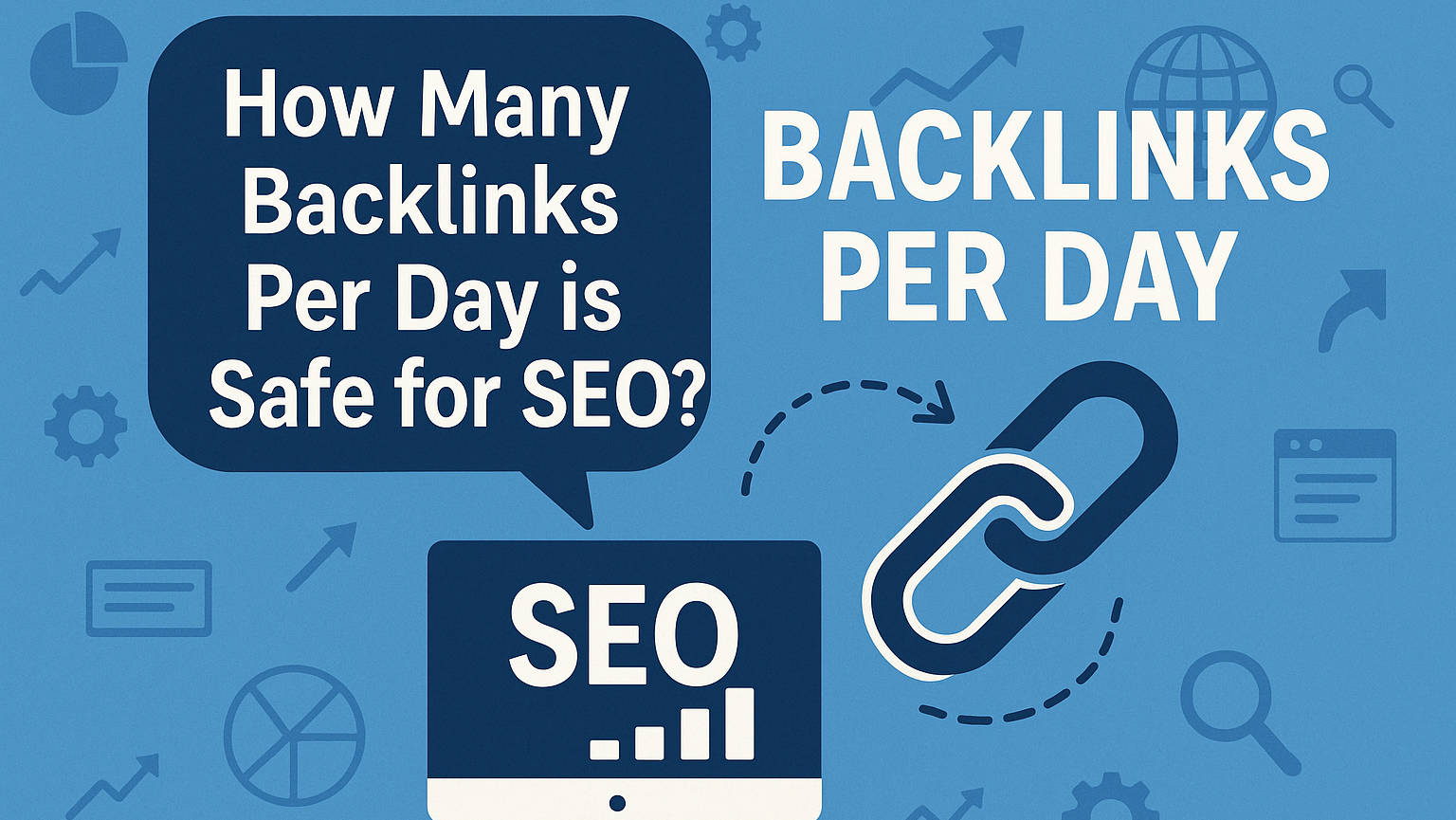
How Many Backlinks Per Day is Safe for SEO?
How Many Backlinks Per Day is Safe for SEO?
Backlinks remain a pillar of effective search engine optimisation. Every operator of a website—from small Kiwi businesses to international brands—wants more links pointing their way. The aspiration is simple: better rankings, more clicks, and a higher profile in organic search. If you’re looking for actionable steps to get started, see our comprehensive guide: How to Create Backlinks for My Website in 2025.
But the question arises: how fast can you safely build links without risking penalties from Google? The notion of a “safe” daily backlink quantity persists in nearly every SEO conversation. Let’s take a close look at the factors influencing backlink velocity, risk tolerance, and what a prudent link profile actually looks like in practice.
What Makes a Backlink “Safe”?
Safety with backlinks comes down to avoiding patterns or tactics that trigger suspicion from search engines. Google’s algorithms have grown sophisticated, examining not just the presence of backlinks but how they accrue over time. A healthy, natural link profile stands in stark contrast to manipulation, and it’s this concept that guides the creation and acquisition of links.
Key factors influencing backlink safety:
- Relevance: Links from related sites in your niche indicate legitimate interest rather than an orchestrated campaign.
- Authority: A handful of links from respected domains means much more than dozens from dubious sources.
- Diversity: Profiles overstuffed with links from forums, comments, or directories tend to raise red flags.
- Anchor Text: Varied, natural phrasing (rather than exact-match, money keywords repeated ad nauseam) helps keep things natural.
Google is less concerned with your absolute number of daily links and more with the context, quality, and authenticity of those links. A new site acquiring 50 links in a day from random blogs will look unnatural. By contrast, a well-known news site could see hundreds in a day, prompted by real events or viral news, without issue.
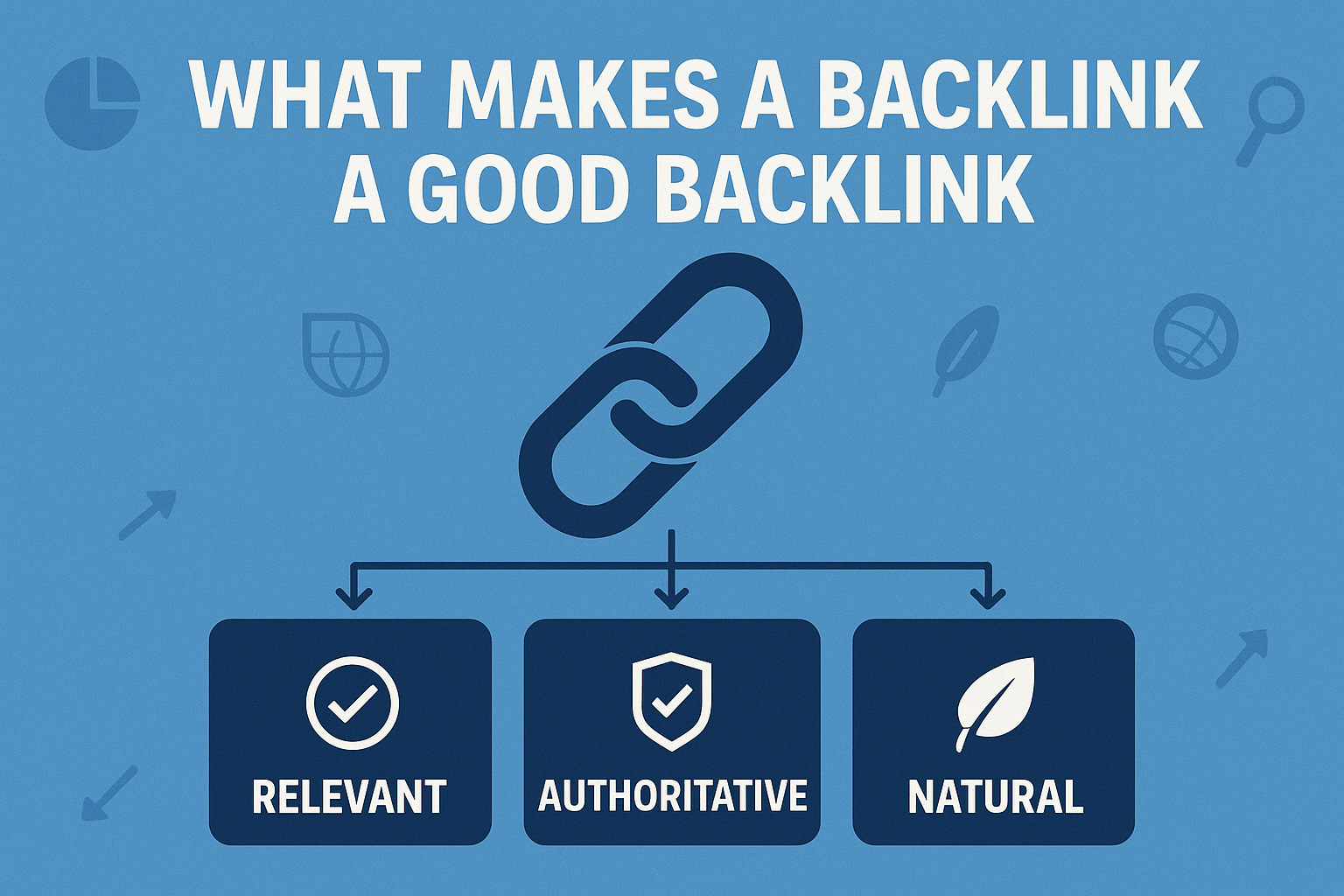
The Myth of a “Magic Number”
There is no officially published daily backlink quota from Google. No public metric, formula, or universally safe number applies to all websites. This unsettles some webmasters seeking a concrete answer, but it’s a logical approach when you consider the diverse nature of websites and content on the web.
Search engines look to simulate natural link building. Natural links arrive at unpredictable rates, triggered by genuine interest. Spikes are not inherently “bad”—provided there’s a discernible reason.
In other words: Context trumps counting.
Let’s compare two hypothetical scenarios:
| Scenario | Daily New Backlinks | Sources | Google’s Likely Interpretation |
|---|---|---|---|
| Local Plumbing Website | 15 | Article directories, forums | High risk, may seem unnatural |
| National News Portal | 1200 | Media syndication, blogs | Normal, event-driven |
A small site suddenly getting dozens of links daily, with no apparent cause, appears suspicious. Conversely, a major news outlet often attracts thousands of links in a short window, which makes sense in context.
Factors that Influence Safe Link Velocity
Many ingredients determine how quickly you should build links to your website. Understanding these variables can help you calibrate your approach and avoid unnecessary risk.
1. Age and History of Your Domain
A domain with years of existence—especially one already earning links organically—can generally withstand faster link accumulation. Sites just launched, or those still with thin content, should be far more conservative in how quickly they grow.
2. Baseline Authority
Established, high-authority sites tend to attract links rapidly because of their profile and trust within their field. Google expects this pattern. Think carefully before trying to replicate their link velocity on a brand new site.
3. Content Quality and Freshness
Content that’s truly shareable naturally earns spikes of links. A research study, breaking news story, or viral post all prompt organic linking behaviour. Low-value content rarely justifies a surge in links.
4. Referral Diversity
Links appearing solely from one type of source—say, only blog comments or only business directories—signal manipulation. Natural profiles feature links from blogs, news, business partners, educational institutions, and more, at irregular intervals.
5. Anchor Text Profile
Exact match anchor text used too heavily—as opposed to branded, generic, or contextually diverse phrasing—has been associated with attempted gaming. Google prefers a spread that mirrors natural language.
Case Studies: Real-World Examples of Safe vs. Unsafe Link Building
Understanding the theory behind safe link velocity is essential, but nothing illustrates the impact better than real-world examples. Below, we present anonymised case studies that reveal how different approaches to backlink acquisition can shape a website’s SEO trajectory.
Case Study 1: Gradual, Contextual Link Building Leads to Sustainable Growth
Background: A New Zealand-based SaaS startup launched a new product and focused on earning backlinks through guest posting, digital PR, and partnerships with industry blogs. The team averaged 8–12 new backlinks per month, with occasional spikes tied to product launches and media coverage.
Results:
- Organic Traffic: Steady 15% month-over-month growth for 12 months.
- Keyword Rankings: 30+ new keywords entered the top 10 positions.
- Link Profile: Diverse sources, including tech blogs, news outlets, and educational sites.
Key Takeaways:
- Gradual, natural link acquisition aligned with content releases and PR events.
- No penalties or ranking drops observed.
- Sustainable growth achieved by prioritising quality and relevance over quantity.
Case Study 2: Aggressive Link Building Triggers Algorithmic Penalty
Background: A local e-commerce site purchased a package promising 200 backlinks in one month, primarily from low-quality directories and blog comments. The spike was not supported by any major content launch or PR activity.
Results:
- Organic Traffic: 40% drop within two months.
- Keyword Rankings: Loss of top 10 positions for 20+ high-value keywords.
- Link Profile: Over 80% of new links from unrelated, low-authority domains.
Key Takeaways:
- Sudden, unnatural spike in backlinks raised red flags with search engines.
- Rankings and traffic suffered due to a lack of contextual relevance and link diversity.
- Recovery required extensive link audits and disavowal, taking over six months.
Visualising the Impact
| Month | Safe Link Building (Traffic) | Unsafe Link Building (Traffic) |
|---|---|---|
| 1 | 1,000 | 1,000 |
| 2 | 1,150 | 1,100 |
| 3 | 1,320 | 900 |
| 4 | 1,520 | 700 |
| 5 | 1,750 | 600 |
The chart above demonstrates how steady, context-driven link building supports ongoing growth, while aggressive, unnatural tactics can lead to sharp declines.
Lessons Learned
- Quality and context matter more than sheer volume.
- Align link acquisition with genuine business activities (product launches, PR, partnerships).
- Monitor your link profile for sudden changes and address low-quality links promptly.
- Avoid shortcuts—the long-term cost of penalties outweighs any short-term gains.
Practical Guidance: Determining Your Safe Rate
You might ask, “What does this mean for my site specifically?” Instead of following a blanket rule, let’s focus on practical, risk-driven decision-making.
Start with your own baseline. Tools like Ahrefs, SEMrush, or Google Search Console can show you how many links you’ve typically earned per month or week. If you average 30 new backlinks monthly, an abrupt jump to 300 is bound to look odd unless you’ve launched a major campaign or scored big PR.
Consider these steps:
- Audit Your Profile: Use SEO tools to check historic link velocity and types of referring domains.
- Match Content to Link Opportunities: Launch strong assets (guides, tools, infographics) and map expected link growth to their natural exposure potential.
- Prioritise Quality Over Quantity: One powerful link beats dozens of weak ones. Focus on meaningful placements.
- Monitor for Unusual Patterns: Sudden increases stemming from low-quality sources should set off alarms.
Growth should feel organic. If you must generalise, a 5–15% month-over-month increase might be a reasonable ceiling for most established sites. For new sites, much lower numbers—certainly no more than a handful weekly—are advisable until natural links start to roll in.

Dealing with Spikes
There are situations where your site may receive an unexpected blitz of links. A tweet goes viral, a news outlet mentions your startup, or a seasonal campaign picks up steam. In these cases, the volume is justified by context—search engines pick up on the reasons for these spikes.
When these events occur:
- Maintain a public record where possible (press mentions, original social posts).
- Ensure these links are coming from diverse and reputable sources.
- Do not attempt to replicate the spike with artificial links in the weeks following—trust the natural cycle.
Irregular bursts happen to healthy websites. The issue arises when spikes are manufactured out of thin air, without a genuine cause or reputable sources behind the linking activity.
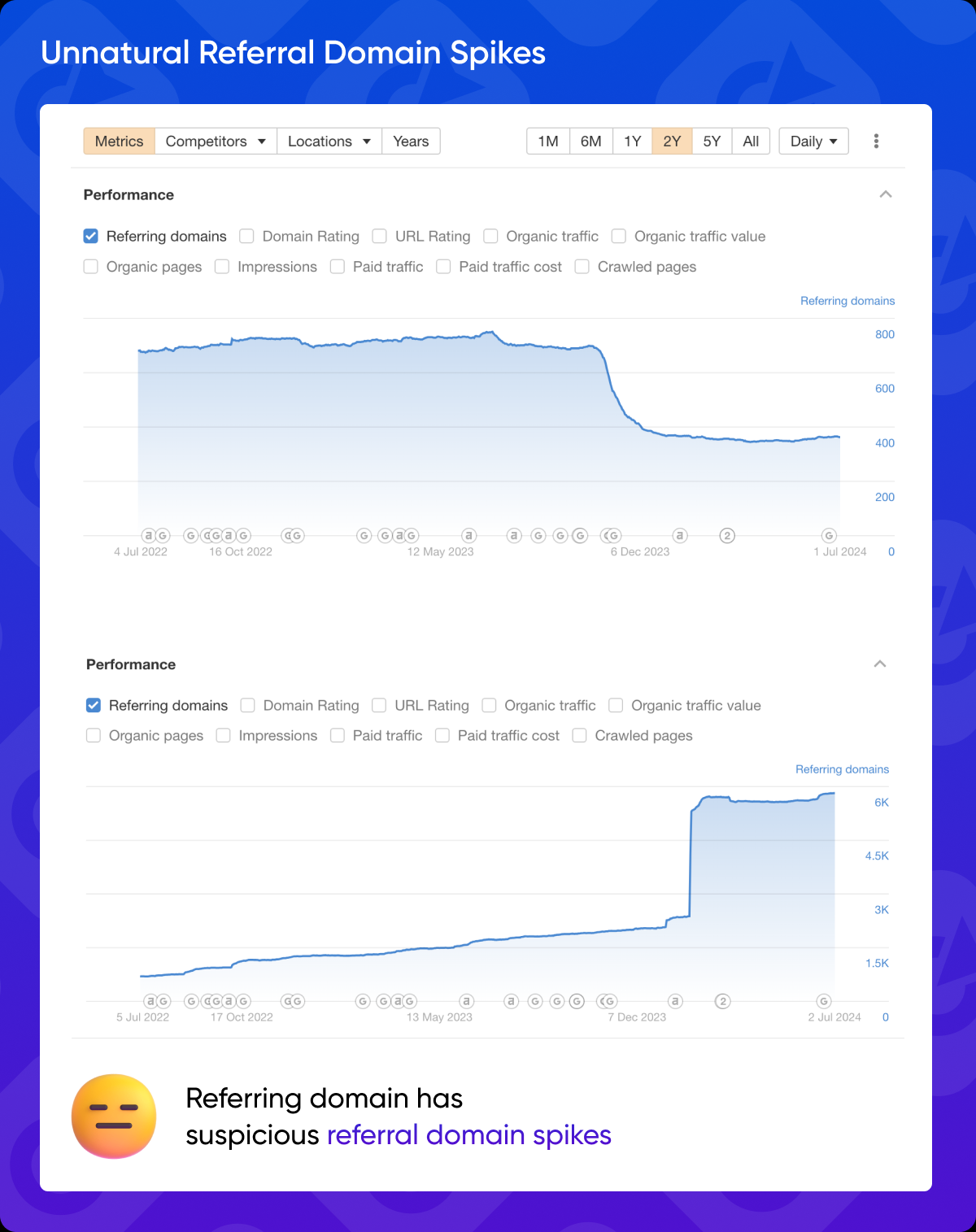
Image Source: collaborator
Types of Links and Their Risk Profiles
All backlinks aren’t equal. The source, method, and context for each new link informs not only its value, but the risk it imparts if too many arrive too quickly. To understand how your overall link makeup affects SEO, read our in-depth guide: What is a Backlink Profile The Ultimate Guide.
Lower-Risk Backlinks
- Editorial placements in news media.
- Referenced links within well-respected industry blogs.
- Backlinks from research papers, .gov, .edu, and major community organisations.
These are rarer, but Google assigns greater weight and trust.
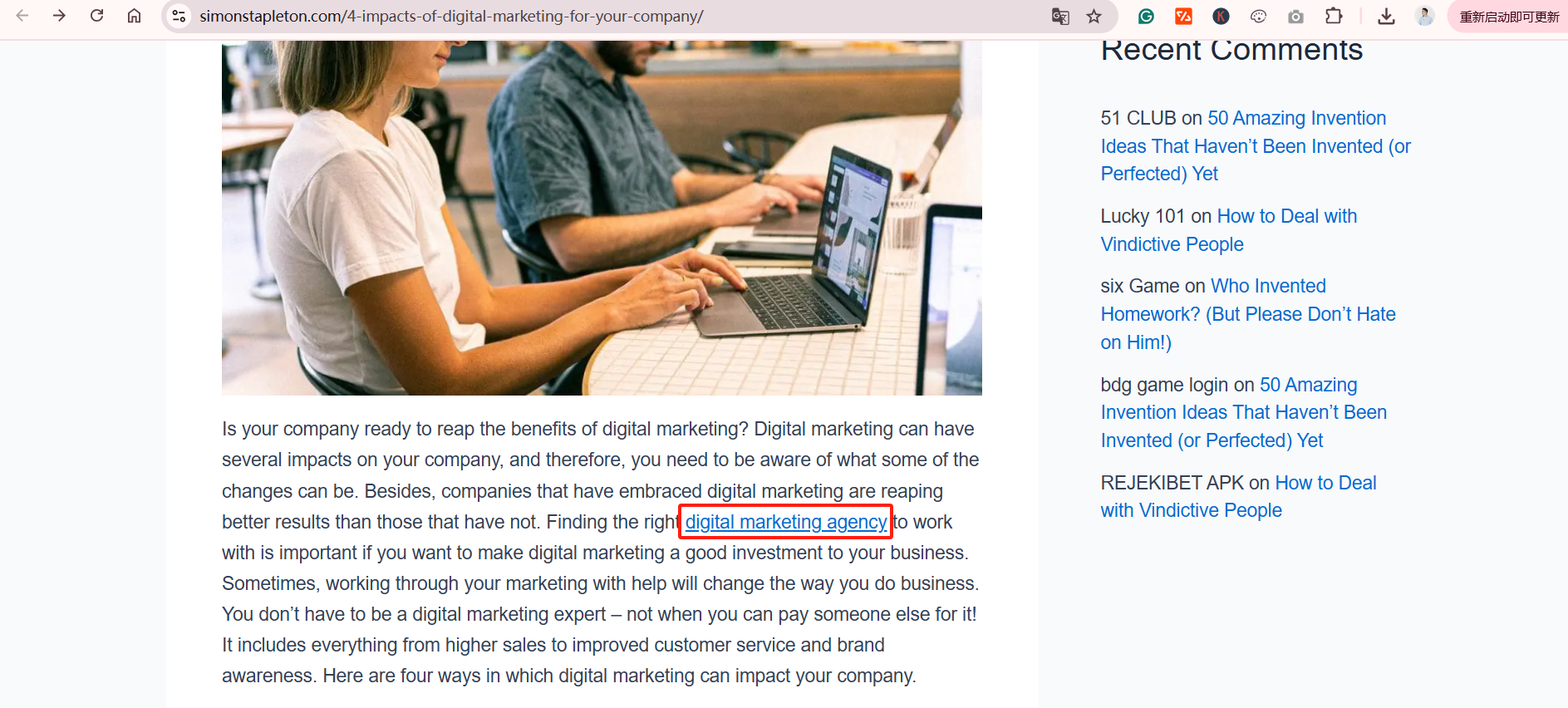
Higher-Risk Backlinks
- Paid links from private blog networks (PBNs).
- Comment spam, forum profile links.
- Mass submissions to low-quality directories or social bookmarking sites.
Large amounts of these links, especially in a compressed timeframe, nearly always do more harm than good.
A quick checklist of questions to ask:
- Would I show this link to a customer as an endorsement of my site?
- Is this the sort of mention that could come up naturally from someone discovering my work?
- Is the linking domain legitimate and relevant?
PBN type backlink has really high risk nowadays since many low-quality website will also place their link into PBN, which might cause your website Reduced authority
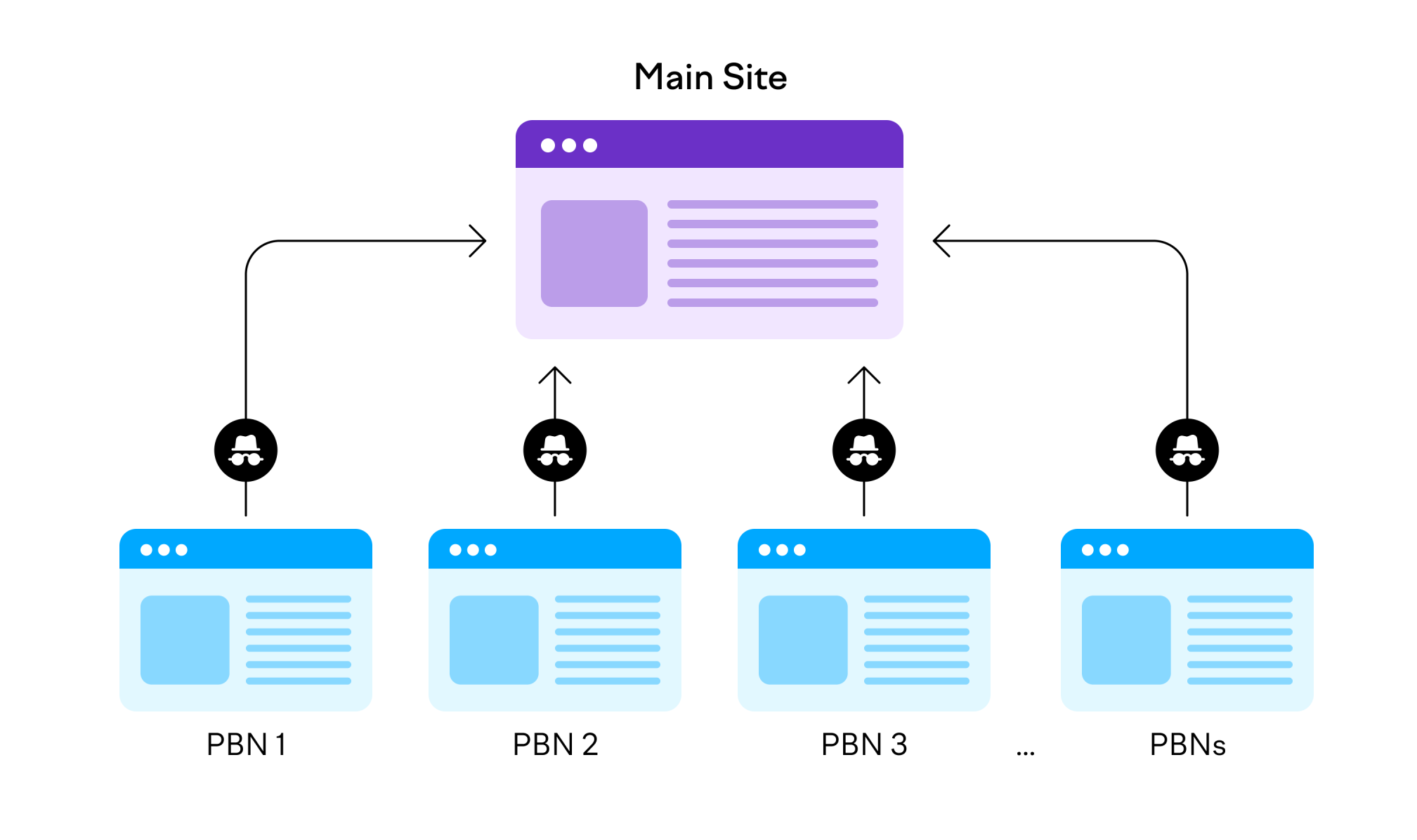
Link Building for Different Stages of Website Growth
Effective link building is not a one-size-fits-all process, especially when partnering with an SEO company. The optimal approach—and what’s considered a safe link velocity—varies dramatically depending on your website’s stage of growth. Here’s how to tailor your strategy for startups, growing businesses, and established brands.
Startups: Laying the Foundation
Strategy:
- Focus on building a small number of high-quality, relevant backlinks.
- Prioritise foundational links: local business directories, industry associations, and partnerships.
- Create shareable content (e.g., guides, infographics) to attract organic mentions.
- Engage in targeted outreach to niche blogs and local media.
Safe Link Velocity:
- Limit to a handful of new backlinks per week.
- Avoid sudden spikes; growth should appear organic and gradual.
Why: New domains are under greater scrutiny. A slow, steady pace signals authenticity and helps avoid triggering spam filters.
Growing Businesses: Accelerating Momentum
Strategy:
- Expand outreach to include guest posting, digital PR, and collaborations with influencers.
- Diversify link sources: industry blogs, podcasts, resource pages, and news features.
- Leverage content marketing campaigns to earn links at a natural pace.
- Monitor link profile regularly to ensure diversity and relevance.
Safe Link Velocity:
- Aim for a 10–20% month-over-month increase in new backlinks, aligned with content and PR activities.
- Occasional spikes are acceptable if tied to real events (e.g., product launches, awards).
Why: A site with some authority and history can safely handle a faster rate of link acquisition, provided it’s supported by genuine business growth and content initiatives.
Established Brands: Scaling with Authority
Strategy:
- Pursue high-authority editorial placements, thought leadership, and large-scale PR.
- Build relationships with global media, industry leaders, and educational institutions.
- Launch major content assets (research, whitepapers, tools) designed to attract widespread attention and links.
- Invest in ongoing digital PR and brand awareness campaigns.
Safe Link Velocity:
- Can accommodate significant spikes, especially during major campaigns or viral events.
- Maintain a consistent baseline of link acquisition, with natural fluctuations based on business activity.
Why: Established brands are expected to attract more links due to their visibility and reputation. Search engines recognise and reward this natural authority, provided the link profile remains diverse and relevant.
Tracking Link Building Campaigns
Organised outreach remains a healthy SEO technique, but it’s important to schedule campaigns with care. Proper tracking and pacing ensure your efforts remain in line with best practice.
- Set weekly/monthly objectives rather than daily quotas.
- Stagger outreach and content releases. Avoid a pattern where every new mention appears at precisely the same time.
- Balance between proactive outreach and earning links passively through high-quality content and awareness campaigns.
If you see a positive SEO response, maintain your rhythm. If rankings stall or decrease, pause and re-read your link profile. Sometimes, slowing down is the safest way forward.
Recap Table: Elements Shaping Safe Link Velocity
| Element | Impact on Link Velocity | Risk Level |
|---|---|---|
| Domain age | Older can handle more | Lower (if gradual) |
| Authority | Higher can handle more | Lower (if natural) |
| Content quality | Superior content invites spikes | Lower (if organic) |
| Link diversity | More types, less risk | Lower |
| Anchor text | Natural variation reduces risk | Lower |
| Source quality | Spam increases risk | Higher |
Link Building Best Practices for Global Businesses
Whether you’re targeting New Zealand or the global market, the fundamentals of effective link building remain the same. However, competing internationally requires an even greater focus on quality, relevance, and sustainable strategies.
- Build relationships with reputable industry partners, influencers, and global media outlets.
- Publish content that addresses the needs and interests of your international audience—comprehensive guides, expert insights, and timely news.
- Secure listings in authoritative global directories and niche platforms relevant to your sector.
Avoid shortcuts such as mass link schemes or low-quality services that promise rapid results. These tactics may offer short-term gains but often result in penalties and long-term damage to your site’s reputation. Instead, approach link building as a strategic, ongoing process—prioritising earned, high-quality links that enhance your authority and trust worldwide.
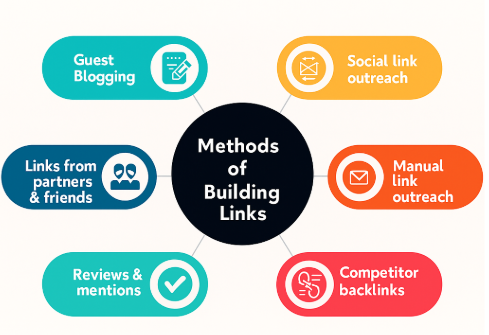
Moving Forward
Safe link growth rests on context and common sense. Authenticity, quality, and timing win out over sheer numbers. Strong results stem from consistent effort, not overnight miracles. Search engines continue to reward those who build relationships, contribute value, and make their presence felt for all the right reasons.
